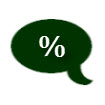 Shmuel Shayowitz (NMLS#19871) is President and Chief Lending Officer at Approved Funding, a privately held local mortgage banker and direct lender. Shmuel has over two decades of industry experience, including licenses and certifications as a certified mortgage underwriter, residential review appraiser, licensed real estate agent, and direct FHA specialized underwriter. Shmuel provides a uniquely holistic approach to comprehensive real estate and financial matters that goes well beyond any single transaction. Shmuel is an award-winning financier recognized for maximizing the short-term and long-term objectives of his client. As a contributing writer to many local and regional newspapers and publications, his insights have been featured in the media for many topics, including mortgages, personal finance, appraisals, and real estate trends.
Shmuel Shayowitz (NMLS#19871) is President and Chief Lending Officer at Approved Funding, a privately held local mortgage banker and direct lender. Shmuel has over two decades of industry experience, including licenses and certifications as a certified mortgage underwriter, residential review appraiser, licensed real estate agent, and direct FHA specialized underwriter. Shmuel provides a uniquely holistic approach to comprehensive real estate and financial matters that goes well beyond any single transaction. Shmuel is an award-winning financier recognized for maximizing the short-term and long-term objectives of his client. As a contributing writer to many local and regional newspapers and publications, his insights have been featured in the media for many topics, including mortgages, personal finance, appraisals, and real estate trends.
This Tuesday, New Jersey Governor Phil Murphy announced that he is formally lifting the “Stay-at-Home” order he installed in New Jersey approximately three months ago. This announcement is a welcomed declaration as to the containment of the COVID-19 pandemic and its casualties. Time will tell, however, if we are too late with all the damage that has been done economically, or whether there might be a new surge in cases as a result of the relaxed guidelines.
Interestingly, it seems that the ‘damage was done’ for the economy even before the spread of COVID-19 in the U.S. The National Bureau of Economic Research’s Business (NBER), the official arbiter of “Recessions,” announced that the U.S. entered into a recession during February, earlier this year. Though it seemed a foregone conclusion, as a rule of thumb, recessions are thought to require two consecutive quarters of negative GDP growth. This isn’t always the case, however, and it’s generally the NBER’s decision to determine the period of recessions – which it concluded based on economic conditions even before the stay at home orders across our nation.
The recession brings to an end the longest expansion in U.S. history, dated as lasting 128 months, or nearly 11 years. The recovery in the U.S. following the “Great Recession” seemed poised to continue until the declaration of the coronavirus pandemic. What followed, according to CNBC, was a move that triggered 95% of the U.S. economy being put into shutdown and sent the unemployment rate, which had been at a 50-year low, soaring to its worst in post-World War II history.
The good news, however, is that at least statistically, as of this writing, things seem to be improving in the economy – and markets across all fronts. On Wednesday, the Mortgage Bankers Association released their Mortgage Application Data for the week ending June 5th showing that overall application volume increased by 9.3%. Applications to purchase a home were up for the 8th straight week at a 5.0% increase with Refinances increasing by 11.0%. On a year over year basis, purchase applications are 13% higher compared to this time last year.
This is a remarkable comeback after being down 35% year-over-year in April. Moreover, the real estate market activity might continue to grow as a recent article by HousingWire showed continued anticipation for new home buying activity going forward. They reported that only about 25% of renters surveyed with leases expiring in the next six months said they are likely to renew their lease, while 35.9% are likely not to renew, and 38% are uncertain at this time.
For current homeowners, there were improvements reported as well. The number of mortgages in forbearance declined last week for the first time since the start of COVID-19 according to the Black Knight group. The number dropped to 4.73 million from 4.76 million in the prior week. It is very encouraging to start seeing these numbers crest and now start to improve. This will hopefully encourage some banks to lower their loss-expectations and ease up on certain lending restrictions that have been imposed.
This week we also heard from the Federal Reserve. As expected, the Fed left rates unchanged at “zero” and expects them to remain at zero through 2022. The Fed will continue to purchase MBS and Treasuries at current levels, meaning they don’t plan to taper those purchases any further. This should keep bond yields and mortgage rates low. The Fed expects GDP for 2020 to be -6.5%, but then 5% in 2021 and 3.5% in 2022.
In even notable news, last Friday we received the May “Jobs Report” showing a gain of 2.5 million jobs, and an unemployment rate that dropped from 14.7% to 13.3%. The 2.5 million job gains came when the forecasts were predicting a 7.7 million job loss, which was a tremendously wide miss. Simply puy, investors are betting on a swift economic recovery from the coronavirus; In fact, this week we saw the S&P 500 erase its 2020 losses and the Nasdaq’s first close above 10K. Remarkably, the Nasdaq is up 11.68% year to date, and up 51.1% from its March 23 low.
Things are certainly starting to get interesting, as we are seeing much anticipation for a quick “V-shaped” recovery, which seems to be the general consensus. I will note from experience, however, when everyone is absolute with optimism, that’s often the time when things move in the other direction and cause the most damage because everyone is too busy celebrating. I for one am not celebrating, yet.
To learn more about Shmuel Shayowitz, click here or complete this form to be connected with Shmuel:


















